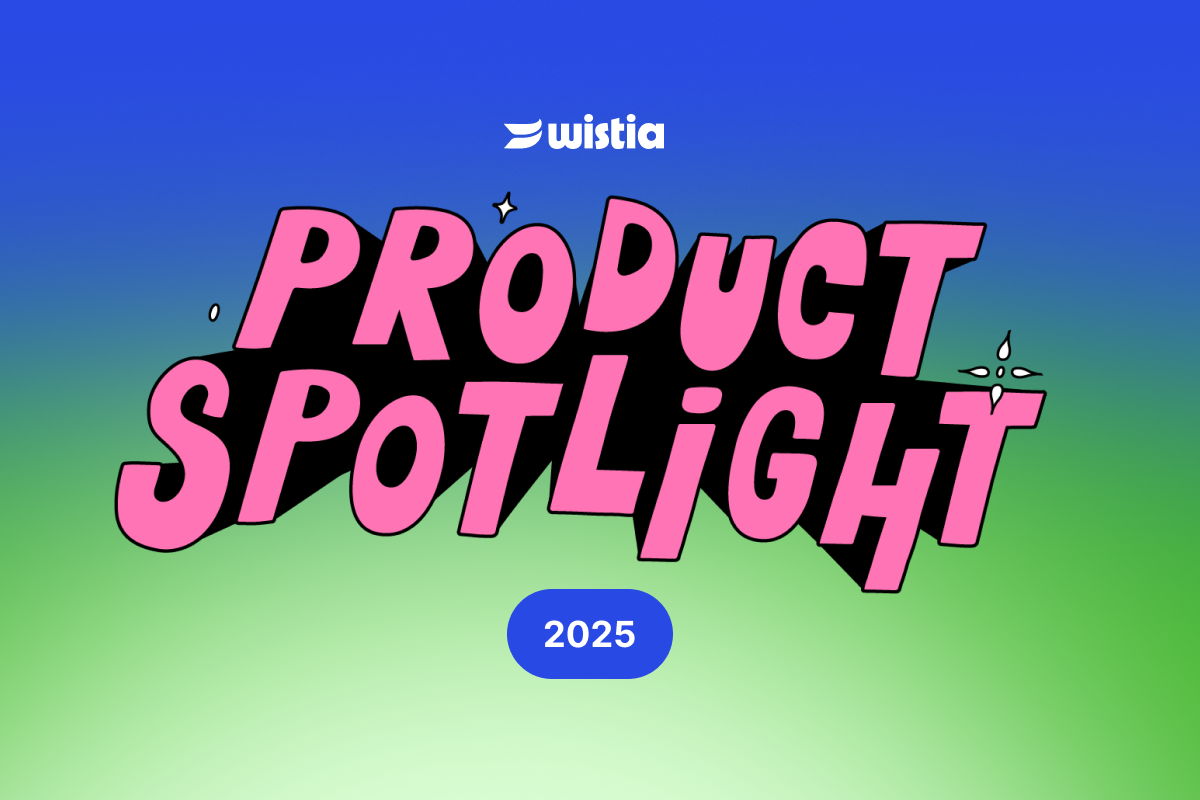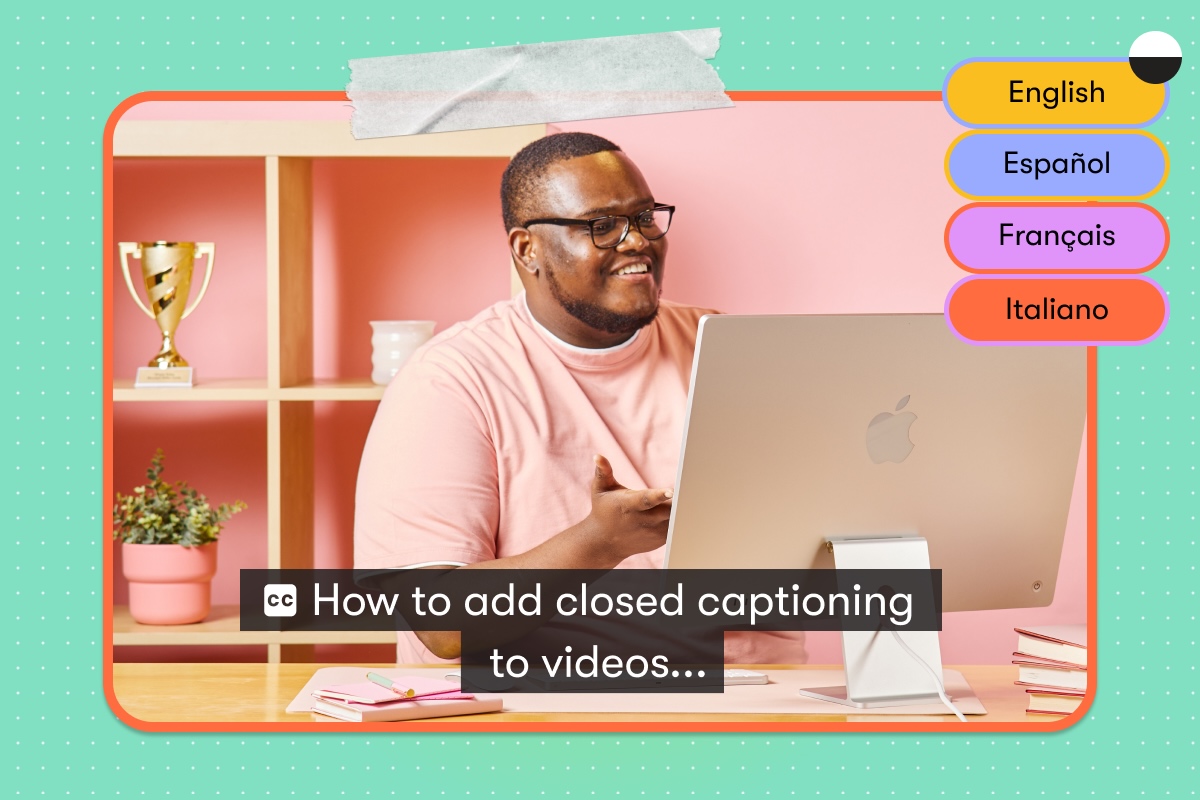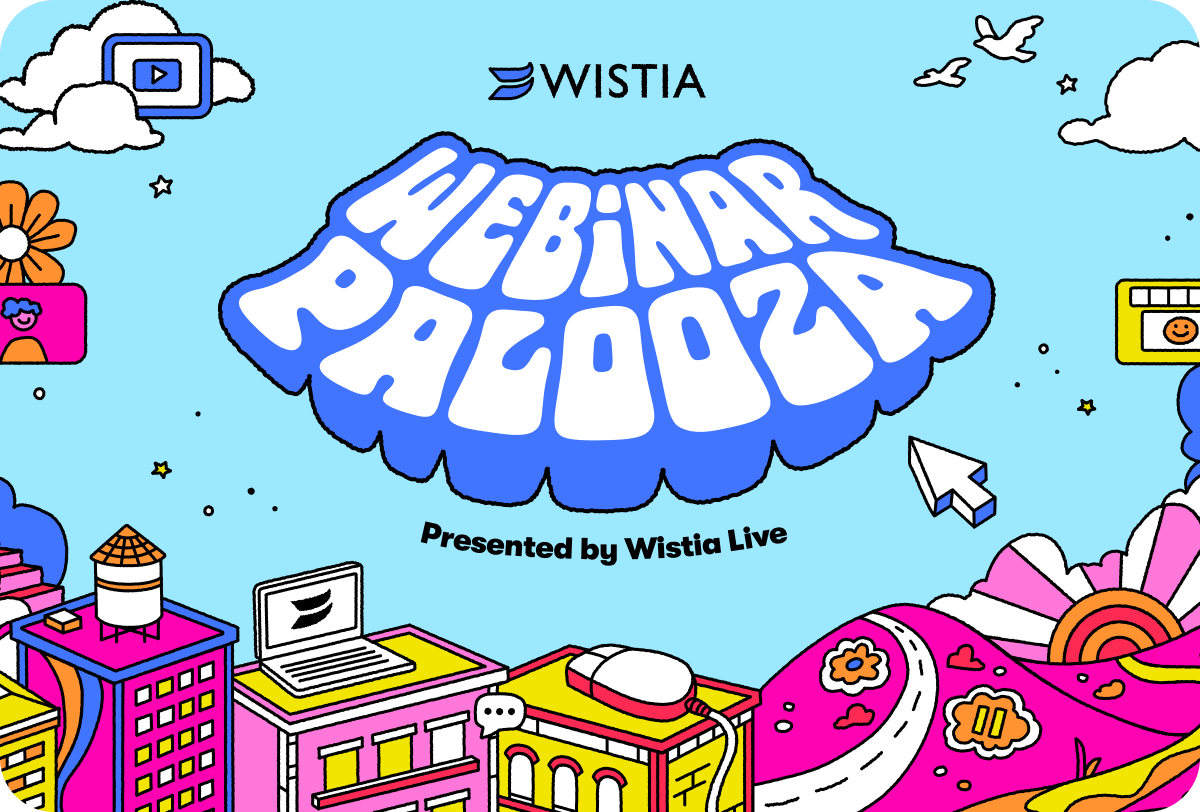Using Video in Your Marketing Automation
Generate new leads, nurture and qualify existing leads, and get the right content, to the right people, at the right time.
June 14, 2019
Topic tags
Marketing automation has been around for years, and video has been around even longer. But using these two tools together is uncharted territory for many businesses. You probably have some questions.
What comes first, the video or the automation? How does each part assist the other? How do I set this up? Sound familiar?
If you’re reading this guide, chances are you already know how important video is to your marketing strategy. By combining video and marketing automation, you’ll be able to take your video marketing to the next level by sending the right video, to the right lead, at the right time.
What we’ll cover
- Understand what marketing automation is (if you need a primer)
- Set goals to influence the type of marketing automation you’ll need
- Generate new leads from video
- Use video and marketing automation to nurture leads
- Identify the right content to send to your leads
- Qualify your existing leads with video data
- Create compelling campaign ideas
What is marketing automation?
Marketing automation (also called lead nurturing) is one of the fastest growing areas of digital marketing. It’s a really important channel to optimize to help you grow your business. Don’t take our word for it: Forrester Research (via Marketo) found that companies who excel at lead nurturing generate 50% more sales-ready leads at a 33% lower cost. That’s pretty impressive.
Email plays a major role in marketing automation, and video performs really well in email. In past tests to see how video impacted email click-through rates, we found that using a video thumbnail instead of a plain image resulted in a 300% lift in our CTRs! The results were so compelling that we moved to using video thumbnails in our emails whenever we can.
As you’re getting started, we recommend keeping the relationship simple. An easy place to begin is by examining your marketing goals to decide where video should fit into your marketing automation strategy.
By harnessing the power of both email and video and using them hand in hand, we have delighted our readers and made lots of new friends (err, readers). Of course, this tactic is also dependent on delivering timely, helpful, and engaging content consistently, but that’s a lesson for another time.
It starts with goals
We can’t talk about video marketing automation strategies, techniques, or examples without understanding our goals first. Where you start depends on your marketing priorities, and the state of your business.
The most common goals include lead generation, lead nurturing, and lead scoring.
Are you desperate to generate more leads? Then you might want to start using video for lead generation. Trying to organize and personalize how you follow-up with your leads? Using videos in your lead nurturing emails will do the trick. Drowning in leads who aren’t converting into sales? Then use your video data to score and qualify your leads.
Generating new leads from video
There are many ways to connect with new sales leads from your website. Traditionally, this involves convincing a visitor to fill out a form (like a contact us form, demo request, brochure download, guide, or e-book).
Video can be a powerful lead generation tool. At Wistia, we like to use our Turnstile email collector to add a form directly within the video player.
Across 250,000+ Wistia accounts, we found that videos with forms in them convert at 16%. That means for every 100 video plays, the video generates 16 new leads. Then, we took a closer look and noticed that videos with a form within the first 20% of the video received a 43% conversion rate.
43%! Let that soak in. That means if your video is 2 minutes long, and you include a form in the first 24 seconds, you can expect 43% of the viewers to submit your form and become a lead. That’s a higher percentage than most website forms.
We’re not saying you should place a required email form in every video you publish. That might be a little over the top. But if your goal is to generate leads, it’s worth thinking about where a form makes sense. Every time you publish a video without a form, you’re missing out on potential submissions.
Nurturing leads with video
Before you can send the right video to the right lead at the right time, you need to understand where your leads are in the buying process and what questions or obstacles they’re thinking about.
Every lead in your email database is at a different stage of the buyer’s journey. Naturally, some are further along (and closer to making a purchase) than others.
For example, someone who downloaded a free educational guide probably isn’t interested in your demo video yet. However, a lead who downloaded your company brochure probably is thinking a bit more about your actual product. How should you organize and prioritize these leads so you can show them the right content?
Map your lead generation efforts to the buyer’s journey
The buyer’s journey is the research process that a person goes through leading up to purchase. It includes 3 steps: awareness of a problem, consideration of potential solutions, and a decision about which solution is best for their particular situation.
- Awareness stage leads realize they have a problem that they want to solve. They typically become a lead by downloading your company’s informational and educational content (like an ebook, guide, or worksheet).
- Consideration stage leads are examining all of the possible solutions available to them. They typically become leads by downloading something product or company specific (like a product overview, brochure, or product comparison).
- Decision stage leads have created a short list of vendors and are looking for something specific to help them make a decision (like a product trial, demo, case study, etc).
In a perfect world, every one of your leads would be in the decision stage and ready to buy your product. The reality is, most leads fall into the awareness or consideration buckets.
If you can categorize your leads by their stage in the buyer’s journey, it will become a lot easier for you to send them the right information (and the right videos) when they need them. This is where marketing automation comes into play.
Identifying the right content
Categorizing your leads based on their stage in the buyer’s journey enables you to email them relevant content. Marketing automation takes your email strategy to the next level by delivering the right video, to the right person, at the right time.
The process looks like this:
- Generate leads from your website.
- Send those leads to your marketing automation platform.
- Group and score those leads based on the type of conversion activity.
- Follow up by sending along related video content they’ll find helpful.
Taking these steps ensures that your prospects are both happier and more qualified. There are quite a few opportunities to include video in the process above. But how do you decide which video to send? Try taking a step back and looking at the types of leads in your database.
For leads in the awareness stage, use marketing automation to send related educational videos. It’s too soon to send these leads product videos, and relevant informational content will help your leads learn more and keep them connected to your company.
For leads in the consideration stage, send some company-related content. These leads are interested in solving a problem and are looking at a variety of potential solutions. It’s still too soon to send them in-depth video testimonials and case studies. However, a high-level video overview or product explainer might hit the spot.
For leads in the decision stage, use video in your marketing automation to push them towards purchase. These leads are likely evaluating a short list of vendors. They’re ready to buy something (from someone). Hit them with your sales enablement content to increase the chances they choose your product. Some videos that might work well at this stage include:
- Video testimonials.
- Case studies.
- Product deep dives.
- Free samples or special deals.
At Wistia, we consider anyone using our free trial to be at the decision stage. We send them a mixture of product training videos, feature-specific tool explanations, and testimonials. Video plays a key role in our nurturing strategy.
Now that we’ve covered the different stages of the buyer’s journey and the pivotal role that video can play in your marketing automation, let’s explore how you can use video data to qualify your existing leads.
Using video data to qualify existing leads
What’s cooler than being cool? Ice cold. And what’s better than using video data to qualify your existing leads and prospects? Nothing.
Just like all leads, all videos are not created equal. The first step in using video data to qualify your leads is to map your videos to the buyer’s journey. We recommend organizing a list of videos in an Excel sheet.
List all of your videos in one column, and the corresponding stage of the buyer’s journey in the next column. Then, assign points to each video on your list. Assign the most points to leads who watch your decision stage videos, since they’re most closely related to sales. Assign the least points to leads who’ve watched your awareness stage videos, since these videos are more educational and less product-focused.
If you have a lot of videos, don’t be intimidated! Start with your most important and most viewed videos first, and add the rest later.
We didn’t include the exact number of points you should assign to each stage of the buyer’s journey because no business uses the same scoring scale. The numbers will look different for every business depending on your lead scoring criteria.
Don’t forget about engagement
Now that you’ve categorized your videos by the buyer’s journey and assigned points, let’s add an additional column for play length to our Excel sheet. This part will be more intuitive. More engagement = more points. But how granular should you get?
For companies just beginning with lead scoring, we recommend starting very basic. Use “50% watched” as a baseline. In other words, if someone views more than 50% of your video, assign them additional points. If a viewer watches less than 50% of your video, don’t assign them those extra points. That’s it.
Wrap up
At this point, you know why marketing automation is so important. You understand why video is a great communication tool. You’ve seen how goals influence marketing automation, and how video can be incorporated into those goals.
By combining video with your marketing automation tools, you can foster deeper connections with your leads by not only addressing their pain points, but anticipating them based on the buyer’s journey.
What are you waiting for? Start nurturing those leads!






